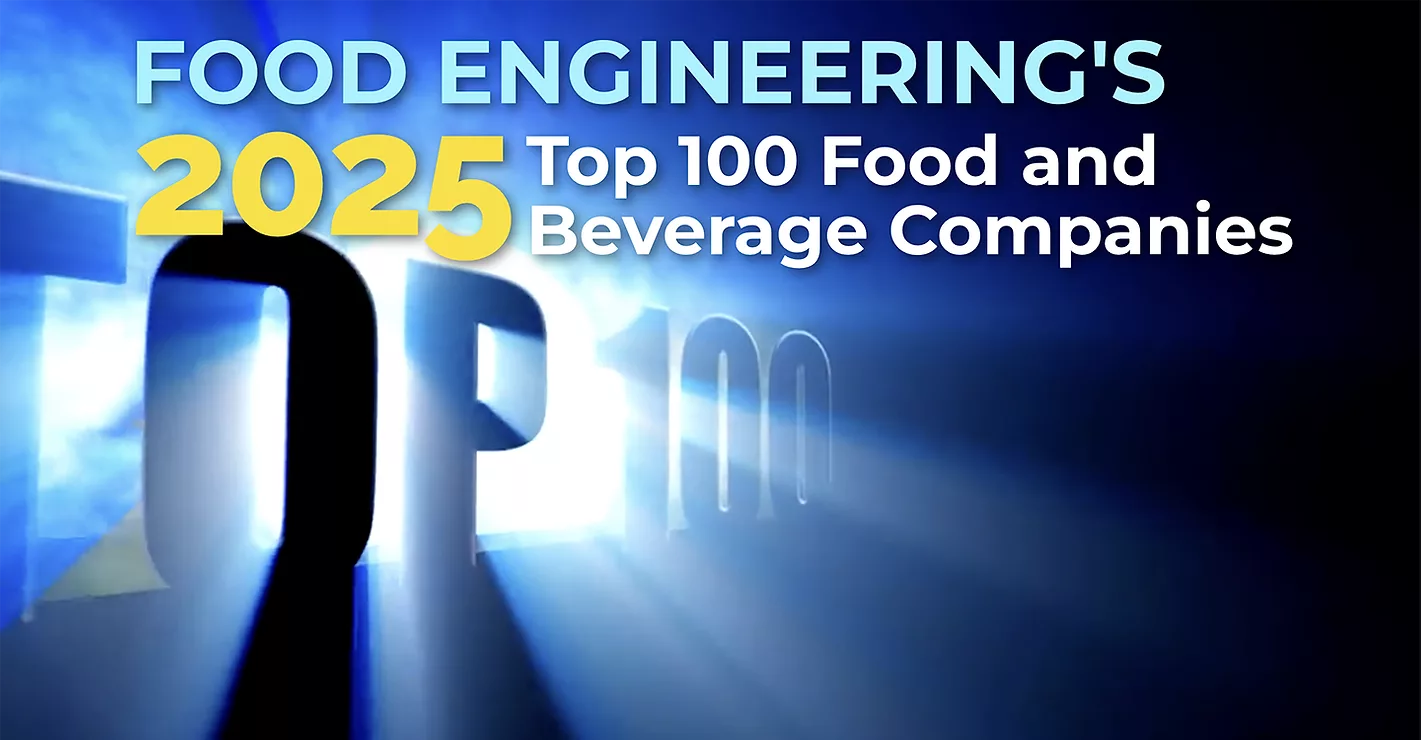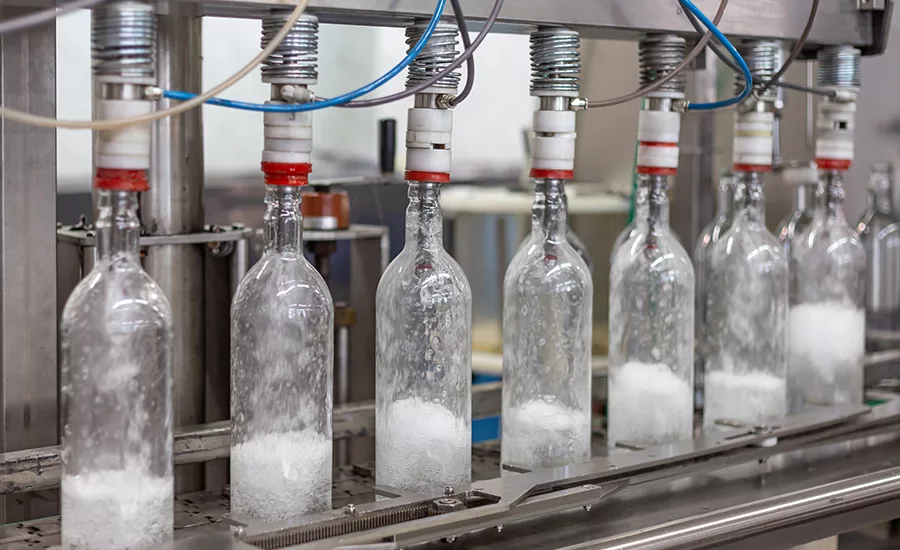Tech Flash Vol. 5 No. 2
McCain Foods and partners to build one of Europe's largest cold storage facilities
The high-density warehouse will have two main areas. The back storage area will store frozen goods in long homogeneous channels in a 100 m x 112 m x 38 m high space. Its cranes will carry pallets with weights to 1,000 kilograms (2204 lbs) into channels that are 16 pallets deep. The two-level front area will be connected by an elevator and used for picking, distribution and incoming goods. The ground floor will house 12 truck gates and an automated unloading system. Two main warehouse areas automatically will handle frozen food such as French fries.
McCain will merge storage and distribution of its sites in Béthume, Harnes and others in northern
New country of origin labeling not so cool
According to CFS, the new COOL ruling contains several misleading loopholes that leave consumers misinformed about their food. For example, according to the COOL ruling:
- If a retail product contains two different types of covered commodities (e.g., a bag of peas and carrots), it is considered a processed food item and is not subject to mandatory COOL
- Retail products that contain a covered commodity and a non-covered commodity, like a bag of lettuce with a dressing packet, are not included in COOL
- Items that are cooked, breaded, marinated, canned, smoked, cured, roasted or restructured (e.g., emulsified or extruded) are not required to bear a COOL label
Moreover, says CFS, food service establishments are exempt from COOL-including restaurants, cafeterias, lunch rooms, food stands, saloons, taverns, bars, butcher shops, delis and even in-store food stations, such as salad or sandwich bars.
In the rules initially proposed, cooked items would have been included in COOL labeling, but the new rules exempt cooked foods as a “processed food item.” The new COOL rules rejected industry requests to exempt such “processing” as peeling, coring and slicing, stating that “a consumer would not eat a pineapple that wasn’t peeled, cored, and sliced. … Such processing thus does not change the character of the product but rather prepares it for consumption.” But the agency took a completely different stance on the cooking of meat and poultry products, says CFS.
Similar logic would dictate that since the vast majority of consumers would not eat raw chicken (nor raw pork, goat meat, ground meats, lamb or beef), cooked chicken and meat products should not be exempt from COOL simply by virtue of their being cooked, said the CFS. It is inconsistent and illogical to assert that cooking meat and poultry is not merely further preparation for consumption, but peeling and coring a pineapple, peeling shrimp and shucking corn are, CFS states.
While the Agency found freezing to be “a means of preservation,” which would not result in a processed food product, it exempted products from COOL that have been canned or cured, both also means of preservation, by deeming them processed foods.Engineering key to global food crisis
The report recommends a stronger focus on developing and improving chemical engineering technologies to: conserve and reuse water, develop pest-resistant crops using modern biotechnology, apply novel enzyme chemistry and technology in food manufacture, and create livestock waste treatment methods to generate energy and biogas as possible food shortfall solutions.
By 2030, the World Bank estimates that cereal production must increase by 30% and meat production by 80% to meet the demands of a global population exceeding eight billion, up more than a billion from current population figures.
According to the report, agriculture currently consumes almost 75% of the world’s water resource, and by 2050, as many as 60 countries are expected to experience water scarcity. As a means of prevention, the report calls for developing and improving chemical technologies to conserve and reuse water, treating contaminated water, recycling water and desalinating and harvesting water for irrigation.
For more information, visit www.icheme.org/thevitalingredient.Automation News
Industrial market tunes into wireless
According to Jim Taylor, director at VDC Research, wireless has overcome many of the initial concerns regarding security, and the perception now is that it offers ease of implementation and lower maintenance and installation costs.
The majority of shipments are in products with wireless Ethernet (IEEE 802.11) connectivity. Among these, IEEE 802.11g is currently the most popular. Proprietary protocols (operating primarily in the 2.4 Ghz and 800/900 Mhz bands) account for the second largest share of shipments. In 2007, proprietary networks accounted for 37% of the worldwide wireless networking infrastructure market. Although a shift toward use of standard networks is expected, shipments with proprietary networks are expected to account for more than 29% of the market in 2012.
| Worldwide shipments of wireless infrastructure products by types of network connectivity ($ millions) | |||
| 2007 | 2012 | CAGR | |
| Wireless Ethernet | 168.0 | 543.9 | 26.5% |
| Proprietary | 111.2 | 273.7 | 19.7% |
| IEEE 802.15.4, ISA 100.11a, Wireless HART, ZigBee (Industrial) | 9.9 | 76.2 | 50.4% |
| Bluetooth | 5.4 | 15.1 | 22.8% |
| Other standards | 4.9 | 19.3 | 31.5% |
| Total | 299.4 | 928.2 | 25.4% |
| Note: Product types include wireless access points, antennas, bridges, device servers, gateways, modems, multiplexers, repeaters, routers, switches, and transceivers used in industrial infrastructure networks. Source: VDC Research. | |||
SERCOS and FDT pull together for open systems
FDT technology standardizes the communication interface between fieldbus devices and engineering tools. Extending the FDT specification to SERCOS III will allow users to configure SERCOS III devices via FDT’s DTM device drivers. DTMs offer special functionality for detailed device configuration and analysis via a graphical user interface. DTM provides a window for the start-up, parameterization and diagnosis of fieldbus devices, thus reducing the complexity of applications and increasing transparency for users and service technicians.
The collaboration between the FDT Group and SERCOS promotes open standards in factory automation-from the field to machine control. Design engineers and developers can combine products from different manufacturers in their automation systems due to the clearly defined interfaces.Demand for energy and commodities drives EAM
A strong manufacturing sector with high demand for commodities and energy has allowed many companies to increase maintenance and capital expenditure budgets. However, some remain cautious as a slow global economy threatens growth prospects. Still, spending for asset management software and services has remained healthy in most regions.
Much of the growth in EAM sales is expected to be driven by services, with prominent growth from maintenance and support services and moderate growth in implementation services. This pattern is typical for mature markets such as EAM.
Limited growth is expected from Tier 1 companies (large companies) as most of them already have implemented an EAM solution and are fine tuning applications for best results. The Tier 2 companies’ (middle-sized) market is expected to experience moderate growth as they adopt best practices from proven implementation to remain competitive. The market for Tier 3 (small companies) is anticipated to experience the strongest growth as EAM adoption expands in this market segment of limited size.
For more information, visit www.arcweb.com.Food Safety News
Salmonella recall starts small, then affects dozens of processors
As part of its ongoing investigation of peanut butter paste supplier Peanut Corporation of America (PCA), FDA advised Kellogg Company that Salmonella Typhimurium was found in one package of Austin Quality Foods Toasty Crackers with Peanut Butter. This product was previously recalled by Kellogg in one of a series of industry recalls relating to PCA’s recall of peanut-based ingredients.
Other processors affected by PCA’s recall include, Clif Bar and Company, which announced a voluntary recall of CLIF and LUNA branded bars that contain peanut butter; The Kroger Company, which has recalled its Private Selection Peanut Butter Passion ice cream; Abbott Nutrition’s Zone Perfect chocolate peanut butter and peanut toffee bars and NutriPals peanut butter chocolate bars; Premier Nutrition’s TWISTED and TITAN bars; and NutriSystem, which recalled its peanut butter granola bar. In addition, the Canadian CFIA also has recalled a number of brands across
PCA has recalled all affected products produced after July 1, 2008. None of the recalled peanut products were sold to commercial outlets; those affected were sold in bulk packages to institutional users and food processors. FDA notified PCA that product samples originating from its Blakely, GA plant have been tested and found positive for Salmonella in the states of
According to Dr. Stephen Sundlof, director of FDA’s Center for Food Safety and Applied Nutrition, “The product being recalled is sold by PCA in bulk packaging in containers ranging in size from 5 pounds to 1700 pounds. The peanut paste is sold in sizes ranging from 35-pound containers to products sold by the tanker.”
He added, “These products are not sold directly to consumers and PCA has stopped all production at its Blakely, GA processing plant as the FDA continues its investigation into the source of the Salmonella contamination.”
As of January 26th, a total of 501 persons infected with the outbreak strain of Salmonella Typhimurium have been reported from 43 states. More than 70 processors have issued recalls related to their use of the PCA product as an ingredient.
For an update on FDA’s activities, visit Recall of Products Containing Peanut Butter: Salmonella Typhimurium.
For an update from CDC, visit Investigation Update: Outbreak of Salmonella Typhimurium Infections, 2008–2009.
Safety reforms desperately needed
“With a focus on prevention, the food and beverage industry is committed to partnering with Congress, the Obama Administration and the FDA to strengthen and modernize our nation’s food safety system,” said GMA President and CEO Pam Bailey. “The Food and Drug Administration must be given better tools and more authority to prevent contamination of the nation's food supplies if we are to maintain our position of global leadership and assure consumer confidence.”
Specifically, the groups asked Congress to require food safety plans, require foreign supplier safety plans and build foreign capacity, ensure the safety of fruits and vegetables, adopt a risk-based approach to inspections and authorize mandatory recalls.Dysfunctional FDA needs reform
“The
Looking for a reprint of this article?
From high-res PDFs to custom plaques, order your copy today!



